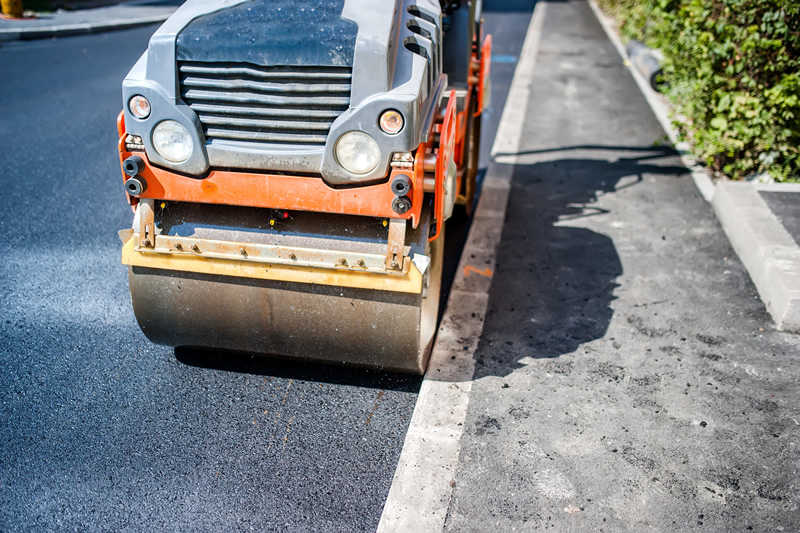An Unbiased View of A1 Professional Asphalt & Sealing Llc
An Unbiased View of A1 Professional Asphalt & Sealing Llc
Blog Article
Not known Details About A1 Professional Asphalt & Sealing Llc
Table of ContentsThe Only Guide for A1 Professional Asphalt & Sealing LlcSome Known Questions About A1 Professional Asphalt & Sealing Llc.Some Of A1 Professional Asphalt & Sealing LlcThe Facts About A1 Professional Asphalt & Sealing Llc UncoveredFacts About A1 Professional Asphalt & Sealing Llc Revealed

The oil in an automobile engine is not simply oil. The REOB consists of all the ingredients that were in the waste oil as well as the wear metals from the engine (mostly iron and copper).
Nevertheless, by making several blends using different REOB samples and various asphalt binders, the variations mainly can be balanced out. Numerous States gave examples of well-known REOB composition to TFHRC researchers, who analyzed the samples to compare the percentage of added (known) REOB to the found (evaluated) amount. The analyses showed a comparable percentage of added and found REOB.
Excitement About A1 Professional Asphalt & Sealing Llc
None of those States realized that the asphalt they were getting included REOB. One State urged its samples had no REOB - https://www.blogtalkradio.com/a1asphaltsealng.
Of the 1,532 examples checked, 12 percent contained REOB, and some had significantly high degrees of it at 1020 percent. The highest degree was 34 percent in a sample from Texas, which TxDOT had actually utilized in a patching compound. This screening likewise revealed the existence of phosphoric acid in 11 percent of the samples, and 2 percent contained ground tire rubber.
2 years ago at TRB's yearly meeting, the Federal scientists held an REOB workshop and provided the findings of their lab examinations to a standing room-only crowd. Although some firms do not specifically outlaw REOB, they do enforce physical tests that avert its useeffectively a ban. what is cold asphalt?. Others do not ban it by spec, but have contracts with asphalt suppliers to avoid using REOB
A1 Professional Asphalt & Sealing Llc for Dummies
A handful do permit REOB, some within certain limits. Ohio and Texas restriction degrees to less than 5 percent of the asphalt. To create a trusted test approach that all States can use, the TFHRC researchers established a round-robin test strategy. The individuals are 11 State highway firms (Illinois, Massachusetts, Minnesota, Mississippi, Montana, North Carolina, Oklahoma, South Carolina, Texas, Vermont, and Wyoming), 2 independent screening laboratories, the Ministry of Transport in Ontario, Queen's College in Ontario, and an Ontario paving specialist.
In total, the scientists prepared and shipped 720 blends. The individuals are examining the examples individually using the guidelines offered by the TFHRC scientists. The round-robin testing is virtually finished, and TFHRC remains in the procedure of collecting the outcomes. The result will be a suggested AASHTO examination approach that any kind of State can embrace and utilize (a1 asphalt).
The sidewalk with REOB, which is located 0.6 mile (1 kilometer) from the pavement without REOB, has similar subgrade, traffic thickness, and climate. The section of Highway655 with 5 to 10 percent REOB revealed considerable cracking. In this example, the presence of REOB was the recognized root check over here cause of splitting at a low temperatures.
A section of examination sidewalk in Minnesota (MN1-4) found to include REOB likewise fractured too soon. The pavement carried out well for the very first 3 to 4 years, yet after that began to crack.
A1 Professional Asphalt & Sealing Llc - The Facts
The examinations were not considerable, yet they revealed that at degrees of 6 percent or more, the tensile strength of the asphalt went down significantly. At a level of 3.5 percent REOB, the variant in the physical examination techniques was above the impact of REOB. Actually, it was challenging for researchers to analyze whether REOB was existing.

One binder specification considered is the distinction between the low temperature level important spec temperature level for tightness (S) in the bending light beam rheometer and the bending light beam rheometer creep incline (m-value) noted as Tcritical. 2 independent study groups, one from AASHTO and the other from the Asphalt Institute, ended that more study is needed on the usage of REOB in asphalt.
Previously, all asphalt screening measured design buildings such as stiffness. These examinations do not show what products had been added to the asphalt. One example received throughout the TFHRC study had an extremely strange evaluation. The example had the complying with test results: Superpave PG 64-28 with a high temperature level quality of 67.3 Tcritical on the bending beam of light rheometer was 6.7 levels Celsius.

What Does A1 Professional Asphalt & Sealing Llc Mean?
These results show there are weak points in the standardized design screening methods that may be exploited. The producer might have an economic benefit and the item passes all the standard tests, but the item might not be helpful to making sure long-lasting performance. To resolve this problem and the expansion of brand-new asphalt ingredients and extenders, TFHRC is starting a research program to make use of handheld spectroscopic devices, x-ray fluorescence spectroscopy, and Fourier change infrared spectroscopy to allow evaluations to be performed in the field as opposed to having to take examples back to the lab.
Report this page